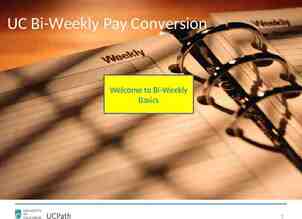Implementing Predictive Analytics: Practical and Ethical
26 Slides4.60 MB
Implementing Predictive Analytics: Practical and Ethical Challenges 2019 COSUAA Annual Conference Long Beach, CA
Ernest Policy Director, Ezeugo National Campus Leadership Council For more predictive analytics research, connect with New America: Twitter: @NewAmericaEd Email: [email protected] Stay in touch! Twitter: @ErnestEzeugo Email: [email protected]
A Tale of Two Universities
“This is hard for you because you think of the students as cuddly bunnies, but you can’t. You just have to drown the bunnies put a Glock to their heads.” Simon Newman, former president of Mount St. Mary University, on a plan convincing students to leave to raise retention rates.
“Because of these proactive interventions all students benefited, but the students who benefited the most were first generation, low-income and students of color.” Tim Renick, vice president of enrollment management and student success at Georgia State University, on the implications of GSU’s use of predictive analytics.
WHAT IS PREDICTIVE ANALYTICS? When past data is used to make predictions about the future
PREDICTIVE ANALYTICS IN HIGHER ED Enrollment - Recruit, admit, and offer aid to new students Early Alerts - Identify students at-risk of failing Recommender Systems - Offer students guidance on course and degree plans Adaptive Technologies - Help students reach course learning goals Facilities - Guide colleges in offering the right classes and controlling use of resources on campus
Ethical Challenges: Tracking/Stream ing Students
Ethical Challenges: Profiling Students
Ethical Challenges : Transparen cy
Ethical Challenges : Privacy and Security
HAVE A VISION AND PLAN Convene key staff to make important decisions Things to consider: Purpose Potential consequences Outcomes to measure
BUILD A SUPPORTIVE INFRASTRUCTURE Assess institutional capacity Communicate the benefits of using predictive analytics Create a climate where it can be embraced Develop a robust change management process
CHOOSING A VENDOR Considerations for building your own system Cost People Institutional capacity to act on data If you decide to partner with a vendor
WORK TO ENSURE PROPER USE OF DATA Make sure your data is Complete and high quality Interpreted accurately Private and secure
MODELS THAT AVOID BIAS Choose a vendor wisely Test and be transparent about models
INTERVENE WITH CARE Carefully communicate to students when deploying interventions Train staff on implicit bias and the limits of data Evaluate and test interventions
THOUGHT EXCERCISE You lead a committee that administers a confidential campus climate survey asking students questions about how connected they feel to faculty, staff, and other students, involvement on campus, exercise, free-time, and study habits, and more. Your Student Life office, who you’ve involved in the process, indicates that research shows some combinations of responses may indicate deteriorating mental health. Your school has recently had a number of mental health related incidents. Some members of your office suggest monitoring students based on their responses. Others recommend reporting students for pre-emptive counseling services. In your opinion, what’s the appropriate course of action? Does it violate the promise of confidentiality? If so, do you feel it can it be justified? Discuss with your neighbors.
NEW AMERICA’S RESEARCH ON PREDICTIVE ANALYTICS Find all of our reports at newamerica.org/education-policy/topics/innovation-education/predictive-analytics/
THANK YOU! Ernest Policy Director, Ezeugo National Campus Leadership Council For more predictive analytics research, connect with New America: Twitter: @NewAmericaEd Email: [email protected] Stay in touch! Twitter: @ErnestEzeugo Email: [email protected]































